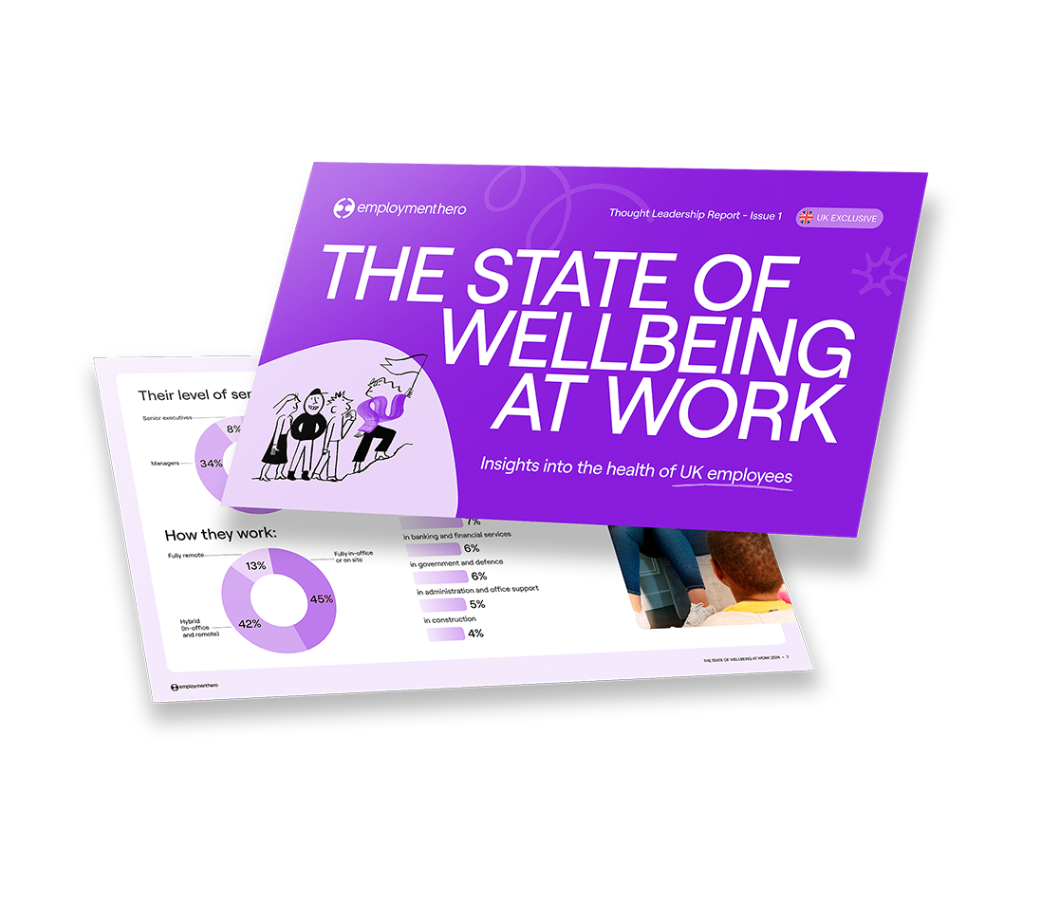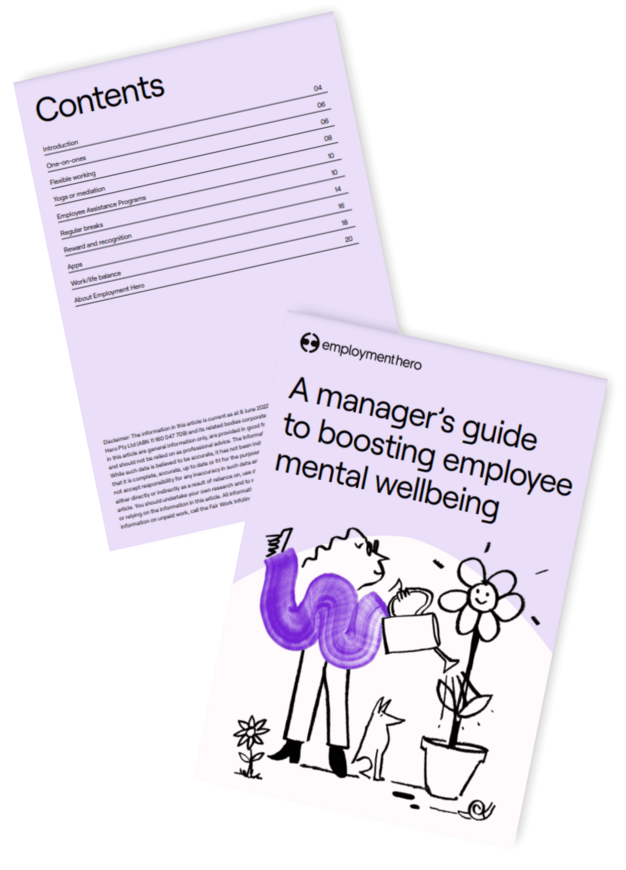10 Ways to Support Remote Employee Wellbeing
As remote and hybrid working models continue to redefine the modern workplace, the conversation around remote working and wellbeing has never been more critical.

While the flexibility of remote work brings undeniable benefits, reduced commute times, better work-life integration and access to a wider talent pool, it also introduces new challenges that can undermine employee wellbeing. Loneliness, blurred boundaries, digital fatigue and difficulty disconnecting are just a few of the hurdles remote workers face every day.
With so many people now working from home regularly, investing in remote working and wellbeing is no longer a “nice to have”, it’s a business imperative. In fact, happier and healthier remote employees are more engaged, more productive and more likely to stay. In our latest research report, Work that Works we found that for business leaders, the top productivity driver is wellbeing of employees.
So it should come as no surprise that business leaders and HR professionals who understand how to support their remote workers are better positioned to attract top talent, build resilient teams and sustain long-term success.
Not sure where to start? We’ll explore 10 practical ways to support remote employee wellbeing.
1. Encourage open communication
Open and transparent communication is the backbone of any healthy workplace, especially in a remote or hybrid environment. Without face-to-face contact, it can be easy for your team to feel disconnected or overlooked. This is why it’s so essential for business owners, leaders and HR professionals to find ways to keep channels of communication open.
The best way of doing this is by being intentional about setting up regular catch-ups with your team. Consider implementing weekly one-on-ones, virtual stand-ups and team check-ins to make sure everyone feels seen. Try to recreate virtual versions of behaviours that would ordinarily happen in the office, such as Zoom coffee catch-ups or Slack groups.
Even anonymous pulse surveys or digital suggestion boxes offer remote employees a safe space to express how they’re feeling, without fear of judgment.
Ultimately, fostering open communication at work is about creating a culture of trust and inclusion. When people feel they can speak up, whether to celebrate wins or share struggles, it contributes to stronger engagement, higher morale and better business outcomes. Knowing how to support remote workers begins with simply listening to them.
2. Offer flexible working hours
Ask anyone and you’ll probably find that flexibility is one of the biggest perks of working from home. And it’s also one of the most powerful tools for supporting remote working and wellbeing.
Giving people control over when they work helps reduce stress, supports better work-life balance and allows them to manage personal responsibilities without sacrificing performance.
Flexible working also recognises that not everyone thrives on a 9-to-5 schedule. Some people do their best thinking early in the morning, while others are more productive in the afternoon or evening. Giving your team the autonomy to choose when they work shows trust and that trust leads to stronger engagement and job satisfaction.
3. Provide mental health resources
Supporting remote working and wellbeing means taking mental health seriously. When employees are working from home, it’s easier for signs of stress or burnout to go unnoticed. Offering clear, accessible mental health resources is key to showing your team that their emotional health matters.
Business owners, leaders and HR professionals can do this by encouraging the use of mental health days and by making sure their team knows how to access support services and wellbeing apps. These tools can provide counselling, stress management and mindfulness support when it’s needed most.
Through Employment Hero, businesses can offer access to Employee Assistance Programmes and a wide range of wellbeing perks, like discounts on fitness apps, meditation tools and mental health platforms. These resources are easy to roll out and show a real commitment to employee wellness.
4. Support physical wellbeing
Remote work wellbeing isn’t all about emotional and mental health, physical health plays a part too. Think about it, when your team aren’t commuting or walking around the office, it’s easy for daily activity to drop, which can have a knock-on impact on energy levels, posture and overall health.
Business owners, leaders and HR professionals can encourage movement through virtual fitness sessions, step challenges or even midday stretch breaks. Support home office ergonomics by providing guidance or stipends for proper desks and chairs to prevent strain or injury.
5. Promote social connection
One of the biggest challenges for business owners, leaders and HR professionals with remote work and wellbeing is isolation. Without hallway chats or shared lunches, employees can feel disconnected from their colleagues and culture. That’s why building intentional moments of connection is essential for remote work and wellbeing.
Simple activities like virtual coffee breaks, team games or casual online socials help recreate the camaraderie of in-person work. These moments foster trust, spark creativity and keep morale high, even when teams are spread across different locations.
6. Set clear expectations
Unclear priorities can quickly lead to confusion, overwork and burnout. All things business owners and HR professionals want to avoid for their team.
When working from home, your team miss out on in-person cues and employees may feel pressured to always be “on” or unsure about what success looks like. Setting clear expectations is essential for protecting the emotional health of your virtual team.
To make sure everyone understands what is expected of them, managers should outline deliverables, deadlines and communication norms from the outset. Avoid micromanaging, but ensure there’s clarity around goals and how progress will be tracked. Encouraging regular check-ins can help course-correct early and reduce stress.
Not sure where to start with goal setting? There are plenty of tools available, such as Employment Hero’s Goals feature. It can help to empower your team by helping you to define, align and track objectives. Not only does this improve focus, but it also ensures everyone is on the same page. When employees know what’s expected, they can work with confidence, balance and purpose.
7. Provide growth and development opportunities
Wellness isn’t just about health, it’s also about purpose and progression. And in order for your team to feel fulfilled, it’s important that they see growth and development. A great way of showing your employees that you care is through professional development.
Offering access to online learning, coaching and mentorship helps employees stay motivated, challenged and connected to their career goals. Platforms such as Employment Hero Learning allows businesses to deliver training, track progress and encourage continuous development. Whether it’s role-specific upskilling or leadership coaching, giving your team the tools to grow is a powerful way to support both remote working and wellbeing.
8. Recognise and reward achievements
According to our Work that Works report, when employees feel their work is recognised, they are 33% more likely to go ‘over and above’ what is expected. So the fact that half of all employees don’t feel recognised enough in their jobs is concerning.
When you’re not always in the office with your team, it can be easy to forget to recognise their work. But it’s a big part of remote working and wellbeing. It reinforces a sense of belonging and boosts morale. Simple acts like shoutouts in team meetings, virtual awards or milestone celebrations can make a big difference.
9. Equip managers to lead remote teams
The role of managers is critical in shaping virtual team experiences. So as a business owner, leader or HR professional, it’s your job to equip managers to effectively lead their virtual team.
Managing from a distance can require new skills and require managers to communicate clearly, monitor performance remotely and identify signs of burnout early.
Invest in leadership training tailored to remote management. Provide practical tools, frameworks and mental health awareness resources to help managers support their teams effectively.
10. Regularly review and adapt policies
Remote work and wellbeing strategies shouldn’t be static, they should be ever-evolving. As your team develops and grows, so should your approach. So it’s important to collect feedback, monitor engagement and adjust policies to stay relevant and responsive.
But we get that all of this takes time, which is something most business owners and HR professionals are short on. So why not make it a bit easier by taking advantage of software. With Employment Hero, businesses can gather insights through integrated surveys and analytics, helping you make data-driven decisions that truly support wellbeing and remote working across your organisation.
Supercharge your remote work wellbeing with Employment Hero
Investing in remote working and wellbeing isn’t just about doing the right thing for your team, it’s a smart business strategy. When employees feel supported, connected and empowered, they’re more engaged, more productive and more likely to stay for the long haul.
From flexible hours to recognition and mental health resources, the steps you take today can build a stronger, more resilient remote workforce for tomorrow. And Employment Hero’s Employment Operating System helps you just that. With all the traditional elements of employment and integrates them into a seamless, human and AI-powered solution that empowers employers, employees and job seekers alike. Find and hire top talent, with SmartMatch, seamlessly onboard new hires, automate complex payroll, drive employee engagement and more.
Related Resources
-
 Read more: The State of Wellbeing at Work Report 2024
Read more: The State of Wellbeing at Work Report 2024The State of Wellbeing at Work Report 2024
Explore the state of UK workplace wellbeing in 2024.
-
![92 Employee wellness survey questions [Free Template]](https://employmenthero.com/uk/wp-content/uploads/sites/2/2022/04/UK_Employee-wellness-survey.png) Read more: 92 Employee wellness survey questions [Free Template]
Read more: 92 Employee wellness survey questions [Free Template]92 Employee wellness survey questions [Free Template]
Our favourite survey questions that will help you form a dynamic workplace wellness program.





















